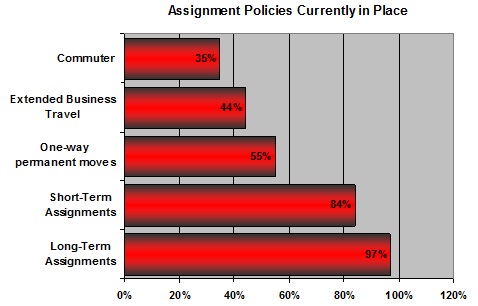Expatriation is a broad term referring to a whole range of work experiences abroad. However, at closer inspection there are many different forms and classifications of expatriation.
First of all, depending on the locus of the initiative, we can differentiate between self-initiated and company-initiated expatriation. A self-initiated foreign worker is defined as an individual who relocates voluntarily to a foreign country on his or her own initiative, i.e. independently of any employer and without organizational assistance, and is hired under a local, host-country contract (Crowley-Henry, 2007; Inkson et al., 1997). In contrast to people who manage their global careers themselves, an employee sent abroad on company initiative is called an assigned expat. Based on recent data self-initiated expatriates constitute a bigger proportion of the international workforce than company expatriates (e.g. 65% vs. 35% in Tharenou & Caulfield, 2010).
Further, speaking of company-initiated expatriation, we can classify expats according to the assignment direction. Such classification refers to the link between the nationality of the employee and the headquarters of the parent company. An international assignee is called expatriate in a narrow sense (or parent country national) when relocating from headquarters to a foreign subsidiary (employee’s nationality is the same as the headquarters’ nationality). The assignee is called inpatriate when relocating from a foreign subsidiary to the headquarters (employee’s nationality is the same as that of the subsidiary). If the assignee’s nationality is neither that of the headquarters nor the foreign subsidiary, the term third country national is applied. Given these differences, it makes more sense to use ‘international assignee’ as the overarching term rather than expatriate.
Expatriation can also be distinguished in terms of the assignment duration. The following assignment types tend to be emphasized: long-term (lasting for more than 1 year), short-term (less than 1 year), commuter (regular but very short-term transfers), extended business travel (less regular but also very short-term transfers, sometimes lasting only days) and one-way permanent moves. The 2010 Global Relocation Trends Survey indicates that long-term assignments are still the most frequently used type. However, other forms have become increasingly important too.
* Based on 2010 Brookfield global relocation survey; respondents provided multiple answers
A final classification that is commonly used refers to the scope of the assignment, differentiating between developmental (and/or graduate), technical, strategic, functional, or virtual transfers.
Further reading:
Biemann, T., & Andresen, M. (2010). Self-initiated foreign expatriates versus assigned expatriates: Two distinct types of international careers? Journal of Managerial Psychology, 25 (4), 430 – 448
Collings, D. G., Scullion, H., & Morley, M. J. (2007). Changing patterns of global staffing in the multinational enterprise: Challenges to the conventional expatriate assignment and emerging alternatives. Journal of World Business, 42(2), 198-213.
Crowley-Henry, M. (2007). The Protean career. International Studies of Management and Organization, 37(3), 44-64.
Inkson, K., Arthur, M.B., Pringle, J., & Barry, S. (1997). Expatriate assignment versus overseas experience: contrasting models of international human resource development. Journal of World Business, 32 (4), 351-68.
Tharenou, P., & Caulfield, N. (2010). Will I stay or will I go? Explaining repatriation by self-initiated expatriates.Academy of Management Journal, 53(5), 1009-1028.


